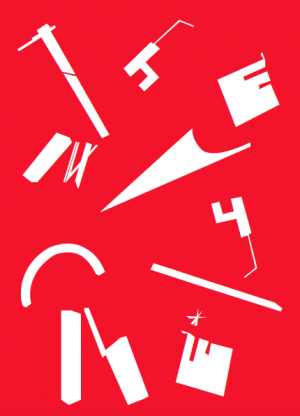Residency and project developed at PEER Paper Platform, throughout the months of December 2016 and January 2017.

Open atelier: 02 december - 23 december, 2016
Exhibition: 05 january - 30 january, 2017
Opening: 05 january 17:00 - 20:00
Jam session: 08 january 14:00 - 18:00
The project was made as a collaboration between Jörn Nettingsmeier and myself, Alina Lupu, with combined backgrounds in music studies, fine arts, computer science, psychology, theater, as well as audio engineering and design. It’s an odd set of skills which brought us together, along with a wish to make projects which reach out and offer a different spatial awareness as well as awareness of overall context to our public.
During a month-long residency at PEER Paper Platform we aimed to be researching, testing and building a collaborative distributed musical instrument – a sound machine for interaction.
During the building up and show, we made available to casual audiences, invited guests, other artists and passers-by, an interactive spatial musical instrument which stringed across and was integrated into the upstairs café area of Peer.
From each table of the café devices clinging to the table sides were tied with strings, which raced across the ceiling and walls, to 4 individual self-built musical instruments - a set of chimes, a large bass guitar, a rototom and an ocean drum. Each of the instruments contained elements of improvisation, having been built from hardware store materials and other found materials which helped produce sound. The instruments were tuned to easily digestible and harmonious scales.
Each instrument required two people at any given time, from two different tables, in order to be activated. There was no way of playing alone. Collaboration was imposed on anyone curious enough to want to activate the instruments. In rare moments, a higher level of improvisation was achieved, when people at all tables, 4 in total, managed to work together to activate all of the instruments at once.
In order to figure out “The Machine” one had to be willing to engage physically with its elements, but also with other people. This required curiosity, but also time to learn, or time to be taught. One interesting observed effect was that of seeing the knowledge be passed on from one set of people that figured out the rules, to newcomers that entered the space. Another effect was the clear overlooking of laws of physics and inability to connect the dots, which many viewers and players seem to experience.
“The Machine” was a pretext for interaction. There was no right way of playing it. The quality of interaction did not depend on the virtuosity of the music played together, but in simply the act of shared play, curiosity and investigation.
Our collective instrument had the potential to trigger small, temporary (“for a day”) communities which are figuring out game rules in an open space, communities born out of the understanding that it’s only through interaction that complex ways of expression through sound can be born.
Made possible with the kind support of: Amsterdam Fonds voor de Kunst.
Visuals by: Andreea Peterfi.